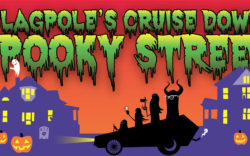In 2000, Stephen J. Goldfarb’s website, www.leofranklynchers.com, identified 12 of the Leo Frank lynchers. As a result of Steve Oney’s book, which identifies 17 more lynchers, the number of known lynchers of Leo Frank has more than doubled, from 12 to 29. There is no reason to doubt the reliability of the lynching lists complied by Goldfarb and Oney. As a matter of historical fact, the total number of lynchers may have reached 40, and both Goldfarb and Oney acknowledge that their lists are incomplete.
Oney furnishes the names of 26 of Leo Frank’s lynchers, nine of whom had previously been identified as lynchers by Goldfarb. According to Oney, the 26 lynchers, who all were from or associated with Cobb County, fell into three categories. First, there were the leaders and the planners, who conceived, plotted, and organized the lynching. Second, there were the field commanders, who were part of and traveled with the lynch party, and were in charge of the footsoldiers who comprised the rest of the lynch party. Third, there were the footsoldiers, who either were part of the lynch party that abducted Frank or materially supported or made helpful arrangements for the lynch party. Oney gives the names of six planners, three field commanders, and 17 footsoldiers (11 of whom were on the lynch party), for a total of 26 lynchers.
Both Goldfarb and Oney agree on the identity of nine lynchers. Goldfarb lists three lynchers (John Augustus (Gus) Benson, Ralph Molden Manning, and Moultrie McKinney Sessions) who are not on Oney’s list, and Oney names 16 lynchers not named by Goldfarb.
The Leaders and Planners
Joseph M. Brown (1851-1932) Governor of Georgia, 1909-1911 and 1912-1913, and a political ally of Tom Watson. On Dec. 27, 1914 he published in The Augusta Chronicle an article hostile to Leo Frank in which he asked rhetorically: “Are we to understand that anybody except a Jew can be punished for a crime?” On Aug. 8, 1915, only days before Leo Frank’s lynching, he published a position paper in The Macon Telegraph in which with regard to the Frank case he asserted that the time had come for “the people to form mobs.” As Governor of Georgia, Joseph M. Brown was the immediate predecessor of Gov. John M. Slaton.
Newton Augustus Morris (1869-1941) An 1893 graduate of the UGA law school, he held numerous public offices during his career, and was a superior court judge of the Blue Ridge Circuit (which included Cobb County) in 1909-1912 and 1917-1919. He was also a property developer and contractor. Oney calls him “a sharp operator” and “a devious and brassy character.” A person who knew Newton Augustus Morris said of him, “He was a fourteen-karat son of a bitch with spare parts.” In 1891 Morris had been charged with attempted murder and cattle rustling in California.
Eugene Herbert Clay (1881-1923) The son of a U. S. Senator, Clay was Mayor of Marietta in 1910-1911, district attorney of the Blue Ridge Circuit in 1913-1918, and a Georgia state senator in 1921-1923. Oney tells us that Clay’s personal life “was a thoroughgoing scandal and had been since boyhood.” In 1901, while a UGA student, he wandered the streets of Athens one night, firing pistol shots into the air, and as a result was expelled from the university. He was found dead at the age of 41 in an Atlanta hotel room on June 22, 1923. There are several different a accounts of how he died. According to a longtime Cobb County Superior Court judge, Luther Hames, “Clay was killed when a whore hit him over the head with a liquor bottle.”
John Tucker Dorsey (1876-1957) One of Marietta’s premier trial lawyers, John Tucker Dorsey was a member of the lower house of the Georgia General Assembly in 1915-1917 and 1941-1945, and served as district attorney of the Blue Ridge Circuit in 1918-1920. Years before the lynching he had been twice convicted of manslaughter and had served an imprisonment sentence on the chain gang. John Tucker Dorsey was a distant cousin of prosecutor Hugh M. Dorsey.
Fred Morris (1876-?) A prominent lawyer, Fred Morris was serving his first term in the Georgia General Assembly at the time of lynching. “[W]hen the Boy Scout movement began,” Oney says, “he organized the Marietta troop.”
Bolan Glover Brumby (1876-1948) Brumby owned a furniture manufacturing company, the Marietta Chair Company. In 1910 The Atlanta Constitution described him as “one of North Georgia’s most successful businessmen.” Oney says that Brumby “was the very image of arrogant Southern aristocracy” and that “nothing angered him more than Northerners.”
The Field Commanders
George Exie Daniell (1882-1970) The proprietor of a jewelry shop on Marietta Square for 40 years, he was a member of the Rotary Club and (like fellow lynchers Newton Augustus Morris and Eugene Herbert Clay) a charter member of the Marietta Country Club.
Gordon Baxter Gann (1877-1949) An attorney and protege of Newton Augustus Morris, Gann was Mayor of Marietta in 1922-1925 and 1927-1929, and a member of the lower house of the Georgia General Assembly in 1919-1922. At the time of the lynching Gann was the judge of the probate court in Cobb County.
Newton Mayes Morris (“Black Newt”) (1878-?) A first cousin of Newton Augustus Morris, he ran the Cobb County chain gang and was so proficient in using his bullwhip on prisoners that he was sometimes known as “Whipping Newt.” In 1891 he had been arrested in California for attempting to murder someone by shooting him with two blasts from a shotgun.
The Footsoldiers
The footsoldiers who assisted the lynch party in a supporting role included:
William J. Frey (1867-1925) The Sheriff of Cobb County in 1903-1909, he prepared the noose used to hang Frank, and may have actually looped it around Frank’s neck. Frey’s Gin, the location of the lynching, was his property.
E. P. Dobbs The Mayor of Marietta when the lynching occurred, he lent his car to the lynch party.
L. B. Robeson A railroad freight agent, he lent his car to the lynch party.
Jim Brumby Bolan Glover Brumby’s brother, he owned a garage and serviced the automobiles used in the lynching.
Robert A. Hill A banker, he helped fund the lynching.
The footsoldiers on the lynch party included:
George Swanson, who was serving as Sheriff of Cobb County in 1915, and two of his deputies, William McKinney and George Hicks.
Cicero Holton Dobbs (1880-1954), a taxi driver. (According to Stephen J. Goldfarb, Cicero Dobbs “operated a grocery store in Marietta for 25 years, and later the Dobbs Barber Shop.”)
D. R. Benton, a farmer, and an uncle of Mary Phagan.
Horace Hamby, a farmer.
“Coon” Shaw, a mule trader.
Emmet and Luther Burton, two brothers, who are believed to have sat on either side of Leo Frank in the automobile that took him from prison to death. Emmet is said to have been a police officer, and Luther a coal yard operator.
“Yellow Jacket” Brown, an electrician, who rode his motorcycle to Milledgeville ahead of the lynch party and cut the city’s telephone lines just before the lynch party entered the prison.
Lawrence Haney, a farmer.
Like what you just read? Support Flagpole by making a donation today. Every dollar you give helps fund our ongoing mission to provide Athens with quality, independent journalism.









